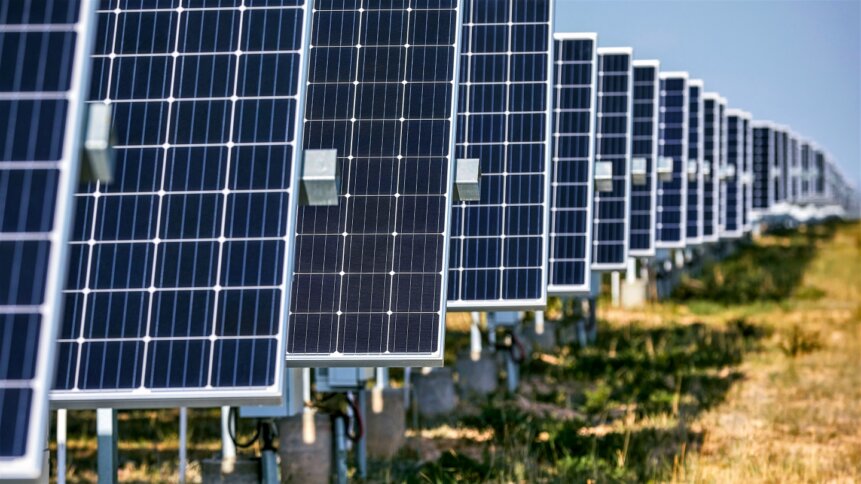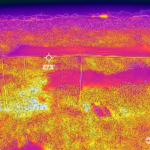US agrivoltaics projects offer energy security

|
Getting your Trinity Audio player ready...
|
Energy security – defined by the IEA as ‘the uninterrupted availability of energy sources at an affordable price’ – is a pressing topic. Global events, including Russia’s invasion of Ukraine, have prompted countries to re-evaluate their energy mix (for real time insights, the impressive energy maps web app is definitely worth a visit, if you haven’t done so already). Distributed energy projects featuring wind and solar installations are being ramped up worldwide. And one of the PV highlights is US agrivoltaics – an energy security solution with benefits for farmers, electricity providers, and the local community.
“The US is not insulated from the Ukraine crisis,” Lucy Bullock-Sieger, VP of Strategy at Lightstar – a developer of community solar projects, which include agrivoltaics – told TechHQ. “Clean energy is security.” More than just dual use, or adjacent infrastructure, agrivoltaics can be defined as a fully integrated crop/solar solution that brings the best of both to an active parcel of land.
US projects such as SCAPES (Sustainably Colocating Agricultural and Photovoltaic Electricity Systems), led by the University of Illinois at Urbana-Champaign, have demonstrated that agrivoltaics can enhance the food and electricity productivity of land, combined. Siting solar panels in well-chosen agricultural sites can diversify and increase farmers’ profits. “Early results suggest that agrivoltaic systems can reduce the amount of water used for irrigation and can help direct rainfall to where it’s most needed,” writes the SCAPES team.
Keeping farmland in production
What’s more, as Lightstar’s Bullock-Sieger points out, installations don’t necessarily require custom solar panels. Standardized single-axis trackers – which, by following the sun, can increase electricity production by as much as 25-35% – are more than capable of doing the job. Already sitting 7.5 feet (2.3 m) in the air, panels offer sufficient access to crops below, while shading the soil from the harsh sun and helping to limit water loss through evaporation.
In fact, technology is less of hurdle than many would imagine, and there are relatively few barriers to getting US agrivoltaics projects up and running. “It’s not complicated, it’s just about trust,” adds Bullock-Sieger. “We spend a lot of time talking about compliance.” For example, farmers can have concerns that solar installations will affect whether a plot still qualifies as farmland. But US agrivoltaics advisors can help and show that the land use doesn’t have to change, as research in Illinois and other areas has shown.
Keeping farmland in production is a big win for US agrivoltaics. The country needs around 15 million acres to meet its solar needs. Millions of acres of productive farmland have already been lost over the years, due to various developments (of all kinds), and communities can be sensitive to projects for this reason. But, as agrivoltaics success stories – not just in the US, but in Europe and other areas too – highlight, solar and agriculture have the capacity to co-exist. It means that along with energy security, PV projects can deliver benefits to the planet without putting pressure on food sources.
To maximize the gains, investment is required in the US electricity grid. A smart grid grant program, administered through the Grid Deployment Office (part of the US Department of Energy), will invest up to $3 billion ($600 million/year for Fiscal Years 2022-2026) in grid resilience technologies and solutions. And this includes a particular focus on integrating renewable energy at transmission and distribution levels.
Funding boost
The Inflation Reduction Act, signed by Joe Biden in 2022, is one of the largest climate change packages in US history, and aims to provide homes, businesses, and communities with much more clean energy by 2030 – something that agrivoltaics projects can certainly contribute to. Fulfilling these national ambitions will require the deployment of millions of solar panels, hundreds of thousands of wind turbines, and the construction of thousands of grid-scale battery plants.
As infrastructure comes online, providing green electricity (and the energy security that comes with distributed power sources), the facilities are likely to inspire more people to consider renewables. Certainly, existing US agrivoltaics installations are attracting interest from farmers who are thinking about partnering with companies such as Lightstar to make more use of their land.
In fact, interest is so high, that Bullock-Sieger and her colleagues will be running tours of up-and-running agrivoltaics in 2023. Facilities are typically built on 15-20 acre parcels of land and generate enough electricity to power around 1000 homes for a year. Spacing between solar panels suits a variety of crops, including those grown in polytunnels. And, in coming years, we can expect much more work to be done on optimizing farming practices to suit agricultural land incorporating solar arrays.
Blueberries, strawberries, and tomatoes are just a few examples of crops that have grown happily alongside PV panels. And in the future, this list is likely to get much longer as more studies are published, and knowledge is shared.










